Word Spaces
CHÔMU’S PURE LIQUID LSD
Julie Sokolow on the drug-addled origins of “The Lobster Kaleidoscope” and Chômu Press’ Dadaoism anthology.
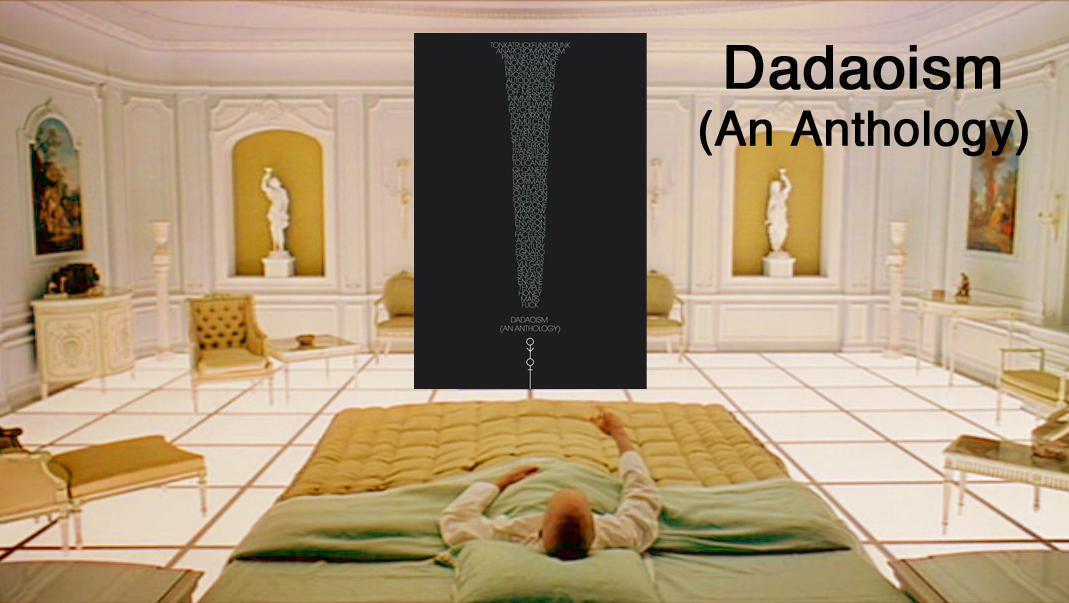
The Cover of Chômu Press’ Dadaoism anthology resembles a certain, familiar monolith. Still from Stanley Kubrick’s 2001: A Space Odyssey (1968).
A year ago, I dispatched my idiosyncrasies overseas. I had been reading the work of a UK-based publishing house called Chômu Press and felt a kinship with their unabashed promise: “If you are tired of tepid, humanistic realism on the one hand, and the narrow fixations of genre on the other, Chômu Press may be what you have been waiting for.” There was something devilishly discourteous about it, but I was intrigued by the Steppenwolf-style invitation to Chomu’s own Magic Theatre. Now, seven years since I originally penned the drug-addled artifact that is “The Lobster Kaleidoscope”, I find it “trippy” to experience it anew within the context of Chômu’s impressive Dadaoism anthology.
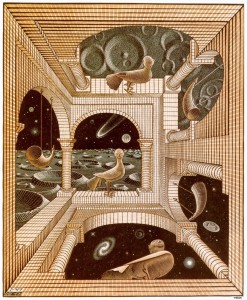
M.C. Escher’s “Another World”
Dos Dazzling Deets re Dadaoism (An Anthology):
1) Metaphysical Portals: As a devotee of Borges, Kafka, and Beckett, I get kicks out of masterful meta-ness, psychological terror, and gallows humor, all of which Dadaoism’s opening piece, “Portrait of a Chair”, possesses in levels of toxicity. In Reggie Oliver’s story, a retired antiques dealer, keenly aware of his mortality, attends an auction where he purchases a captivatingly simple portrait of a chair. The portrait is not just some symmetrical schlock to mount over a mantel, but rather, a metaphysical portal to a dimension in which inanimate objects are paradoxically conscious, and the narrator, having undergone a paralyzing transformation, must fight through telepathic intellect alone to survive.
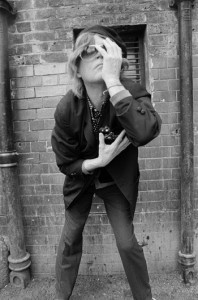
Photo of Jeremy Reed by Gregory Hesse
2) Street Cred: Dadaoism ends with two poems by Bjork and J.G. Ballard’s darling favorite, Jeremy Reed. Called by the Independent, “British poetry’s glam, spangly, shape-shifting answer to David Bowie”, Reed’s poems read like lyrics to a song you’ll want to air guitar solo to. That is, before the anxiety-provoking subject sinks in. In his poem “Rock ‘n’ Roll Suicides”, he samples the true story of Joe Meek, the pioneering record producer, songwriter, and paranoid occultist, who shot and killed his landlady before turning the gun on himself. Reed weaves together the details of Meek’s particular story and the greater mythos of rock ‘n’ roll’s dark side. Meek’s loft is “a sounds lab–pop and Ouija and blue pills…”. Reed canonizes Meek with those other archetypal “death-inducers” (e.g. -Presley, Hendrix, Cobain), “excess bingers hallucinating in the drop/into the roaring underground.”
Somewhere between metaphysical portals and street cred lies my short story, “The Lobster Kaleidoscope”. Stylistically, it is a circular narrative that poses existential questions through naive word play – a sort of children’s tale for adults, recalling the work of Lewis Carroll and Tom Robbins. When I dispatched my story overseas, I told Chômu all this, but omitted one major detail: “The Lobster Kaleidoscope” was conceived on my virginal LSD odyssey. Now that the story is in print, I feel compelled to explain its origins to aspiring psychologists and the merely curious, keen on the link between drugs, creativity, and memory.
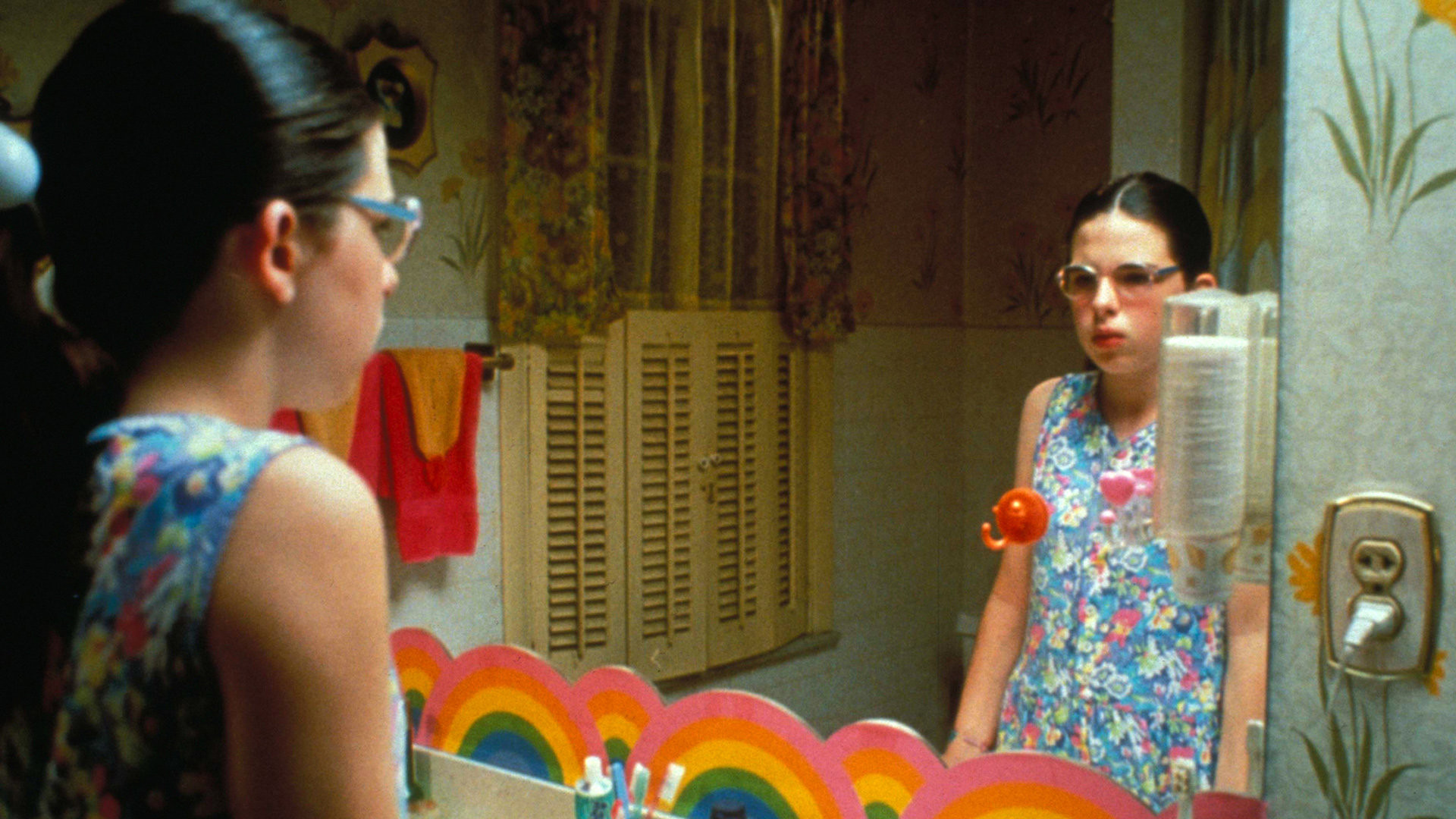
My mirror image. Still from Todd Solondz’s Welcome to the Dollhouse (1995).
Suburbia, 1995 – I was a pre-teen waiting for health class to commence, drawing a heart around the name “Jonathan Taylor Thomas” and dreaming up the next beanie baby I’d add to the toy hammock above my bed. I wore knit pants, because denim chafed my legs. When nervous, I poked tiny holes in my knit pants with number two pencils.
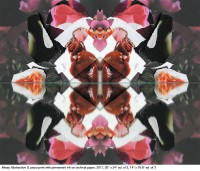
Barbara Weissberger’s Meaty Abstraction 9 (2011)
Some peers were nursing their tamagotchis in isolation; running poignantly from the classroom in tears when called names such as, “Sissy”. Others had blonde highlights in their hair and the unfathomable grit to withstand jeans. On this particular day, they were blasting the Offspring from their Sony Discmans and chanting in unison, “Give it to me baby, Uh Huh, Uh Huh.”The pre-class ritualistic chaos was still in full swing, when our teacher, Mr. Ruins, burst through the door. His face was as red as a sunburn, either from the sun or decades of alcoholism, the latter, a possibility that only occurs to me now, as a non-child glancing back at the ruins of youth. Mr. Ruins rolled in a giant cube of a television perched on a monolithic, roving entertainment unit. Neither the whiteness of his New Balance running shoes or the muscular superiority of his calves detracted from his raw-meat complexion.
“Listen up. Today, you’re going to learn something real,” he said.
He popped in a VHS tape and a documentary faded in: “Meet Larry. Larry used to have a nice life. He had great parents, a lot of friends, and was even the star of the track team. He graduated top of his class and went on to university with plans of becoming a doctor. Then, one day, Larry’s friend offered him a street drug called LSD-”

Drawing by Theodoros Pelecanos in alchemical tract titled Synosius (1478)
Suddenly, a synth soundtrack took hold. The picture of handsome Larry, smiling in cap and gown, cross-dissolved into black-and-white footage of a bald, overweight man restrained by leather straps in a white-walled institution. He let out a battery of incomprehensible shrieks as his eyes rolled back into his head.
“Snakes! Oh god, they’re everywhere!” Larry, the mutant, howled from his gurney.
I looked around the room. Even the cool kids were staring with their mouths agape at the horror, the horror, of poor Larry who had it all, but now, was damned to hear the hiss of invisible snakes for the rest of his mortal life.
“Some people learn the hard way,” Mr. Ruins said. “Don’t be one of those people.”
***
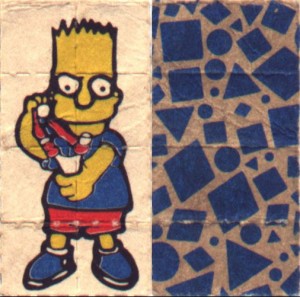
LSD Blotter (Bart Simpson - Front & Back), Photo by Acid Crash, © 2001 Erowid.org
Urban College Campus, 2005 – Fast-forward to my freshman year of college. As a scholar of the liberal arts, I met a lot of kids who aspired to overthrow the government and spike the water supply with LSD – supposedly, in a humanitarian, rather than sadistic, effort, to spark the next evolution of mankind. I met a new friend in a philosophy class who was of this mind and one day, after hours of talking provocatively about rebellions we didn’t have the guts to wage, he turned his scrutiny on me.
“You want to be a writer, but you grew up sheltered in suburbia. How are you going to expand other people’s minds, when you haven’t even expanded your own?” he said.
He handed me a tiny piece of paper with Bart Simpson’s face on it. I stuck it to the roof of my mouth and was instructed to keep it there for approximately five minutes.
“I don’t think it’s working,” I whispered into the ether of my friend’s efficiency apartment.
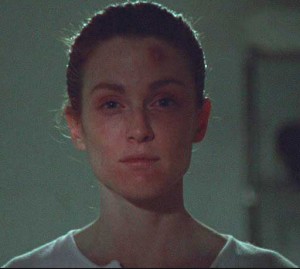
Another mirror image. Still from Todd Hayne’s Safe (1995).
Twenty-five minutes later I was crawling under the kitchen’s bar, watching a tapestry flap against a wall like a bat trapped in a net. Frightened, I crawled to the bathroom and a beam of magenta light shot through the window directly at me. Under my crusty paws, a foggy mist shifted over the yellow, speckled tile floor. I stared unblinkingly into a full-length mirror.
“You’ll be okay, I said to my reflection. “I love you.”
Then I started crying.
I tried to calm down by chain-smoking and drinking a 67 oz. bottle of Coca-Cola, and when that failed miserably, I told my friend I had to go home and get some work done.
“It’s two in the morning,” he said.
***
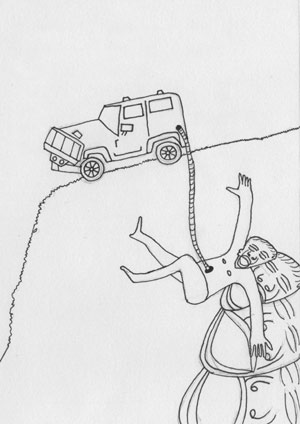
An illustration called “Baby Overboard” based on “The Lobster Kaleidoscope” (2005)
At home, I sat at the computer and stared at a blank Microsoft Word document, noting the unsettling sensuality of my fingers kneading the keys. Then suddenly, I became possessed. I typed without pause, overcome by a vision, not unlike Larry’s snakes. The story scribed by forces outside of my control was about a painfully naive girl, who traced the steps of her life and death back to one key locale: the waiting room of a Red Lobster restaurant – a setting so emblematic of my experience with suburban mundanity that I am now utterly convinced of the subconscious’ power to drudge up the most effective symbolism for any circumstance. It is in the limbo of a Red Lobster waiting room that a warped magic takes hold. As the girl waits for her date to arrive, she enters into a Socratic dialogue with a miscellany of anthropomorphic sea creatures and discovers something akin to the meaning of life.
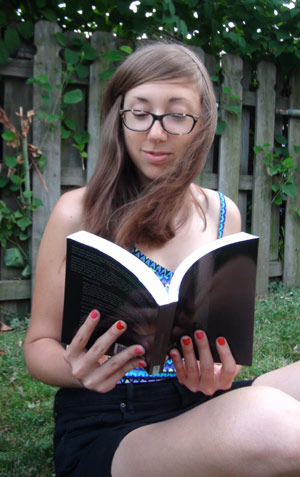
Crackin’ open ye olde monolith.
I wrote straight from 2 AM to 2 PM, and upon finishing the final sentence, I collapsed on the IKEA mattress of my college apartment. I laid there blissfully, believing my existential questions had found their answers, coded in the story’s absurdity. In the months that followed, I would revise it and revise it, print it, and circulate it among unsuspecting acquaintances, before ultimately, dispatching it overseas..
***
It is now 2012 and “The Lobster Kaleidoscope” remains a portal jam-packed with flashback fodder – uroboric thought loops, melting mirrors, and a colorful landfill of junked up metaphors. In the past couple of years, I’ve veered away from psychedelics, having witnessed the anxiety and paranoia they can breed in otherwise functional minds. Still, nostalgia has a way of veiling old threats and seductively spotlighting the ecstatic creative state; the confidence with which a vision can overtake a person, for better or worse.
– – –
Julie Sokolow is a musician, writer, and filmmaker, acclaimed by Pitchfork, The Washington Post, and Wire, among others. She is a 2012 recipient of a Creative Development Grant from The Pittsburgh Foundation and for the past year, has been directing her first feature-length documentary, Aspie Seeks Love. For more about her work, visit www.juliesokolow.com.
Tags: Chômu Press, Dadoism anthology, Julie Sokolow, The Lobster Kaleidoscope

Chomu press is awesome, and I have a story in that collection.
Nice to see Julie at HTML GIANT.
Julie looks like this girl that used to panhandle outside of Powell’s. Like, she was this pretty stylish, clean panhandler that I’m pretty sure all the other panhandlers wanted to kill.
[…] HTMLGIANT just published my personal essay/lit review entitled, “Chômu’s Pure Liquid LSD” on the topics of drugs, creativity, and memory – specifically, the early psychedelic experience which inspired my short story “The Lobster Kaleidoscope” in Chômu Press’ Dadaoism (An Anthology). Share it:Like this:LikeBe the first to like this. This entry was posted in Fragments, Writing and tagged anxiety, lsd, psychedelic, suburbia, writing. […]
(>^_^)>
I think Chomu is my favorite PH right now. Check this video with Quentin S Crisp. Someone talking about books with that serene passion is a gift. I specially like what he says at the end, from 18’30” on.
http://www.youtube.com/watch?v=WWMOJp6lZJ0
http://www.youtube.com/watch?v=86nGUmxI4Fo
I agree with you, probably because they published my book but also because of how awesome a job Quentin and his staff does with curating, editing, designing, and promoting Chomu’s books.
I do not have a story in that collection. Looks interesting nonetheless.
[…] uploaded to HTML Giant is an article by Julie Sokolow on Chômu’s Dadaoism anthology and the psychedelic experience. A page has […]
Like it. Already because of Dadaoism.
tinyurl.com/7zjh3zc